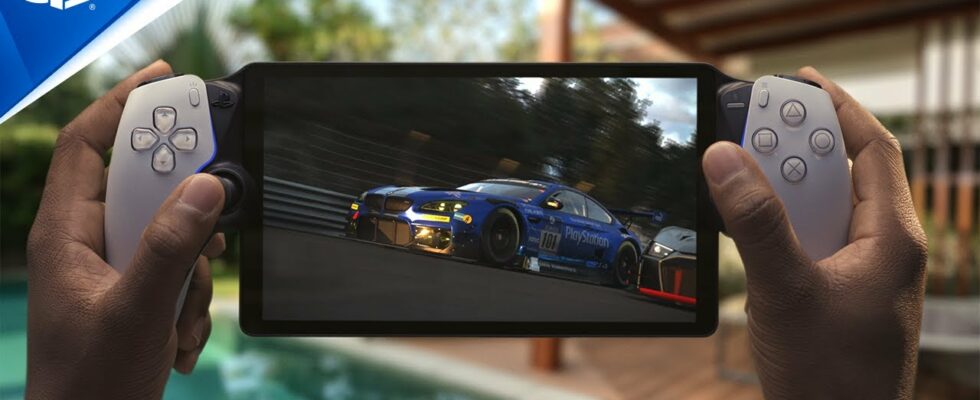Sony’s PlayStation Portal has officially arrived to a mixed reception, with a bevvy of concerns about the device’s performance matched by compliments about its price and usability. The platform has been widely successful, but the system’s reliance on home networking puts it in an awkward place for a £200 device. In a gaming landscape increasingly filled by a ‘release now, fix later’ philosophy, the Portal could be an outlier, with concerns about what this could mean for Sony’s future handheld efforts.
The Portal as a Device
The PlayStation Portal is essentially a remote-play device for users who already own a PS5. It comes with the full functionality of a PS5 DualSense controller, an 8-inch 60Hz LCD screen, and a resolution of 1920×1080 pixels. The Portal is designed to let players access their games throughout the house away from a primary screen, and in perfect circumstances, it fulfils this function admirably. The problem is that few average homes have the functionality to provide players with exactly what they need.
Software and Future-Proofing
Solving issues with what homes offer and what games require can be achieved in several methods. The best is by simply designing games and systems efficiently from the start. Software that follows this path is extremely common in the online betting arena with titles like the Slingo casino games. These titles like Tetris Slingo and Slingo Cleopatra are built on high standards of HTML5. HTML5 programmed lets games function well on existing systems, while scaling perfectly to the machines of tomorrow. This allows Slingo games to work well now, tomorrow, and across a range of desktop and laptop devices.
In the AAA video game software space, the approach can be quite different. Titles released in 2023 like Cities Skylines 2 and Star Wars Jedi: Survivor have landed with poor optimisation, unable to achieve acceptable frame rates even on the most powerful machines. The idea from the publishers is that future patches will fix issues, and the more capable devices in the years to come will produce more overhead. If you buy the game on launch, however, you’ll likely not be happy with the results.
The Portal’s Mountain to Climb
The big problem faced by the PlayStation Portal is that, as a piece of hardware, its limitations are much harder to patch out. This is a device that struggles when a Wi-Fi connection fails to deliver. Software patches won’t make changes to the laws of physics, so future patches won’t offer overhauls in performance or reliability.
Also unlike with software, at-home users are unlikely to upgrade their hardware to offer what the Portal needs to succeed. A powerful and expensive router does improve performance potential, but asking users to drop an extra few hundred pounds on a new router over a £200 Portal is a difficult sell. Most people use the standard router provided by their ISP, and these have not significantly improved over time in the ways the Portal requires.
Sony’s Next Step
Should the Portal fail commercially, it could prove a nail in the coffin of Sony’s once-lauded handheld efforts. The celebrated PSP and great but less-successful PS Vita were fantastic stand-alone devices, and many fans dream of their return. If the Portal’s sales scare Sony off, the likelihood of a new machine in the future is significantly lower.

With PC-based platforms like the Steam Deck and ROG Ally performing so well, and Nintendo’s Switch setting records, evidence suggests enough space in the handheld market for more platforms. Whether or not Sony will ever again set foot in this space is another question entirely, and we’ll have to watch the Portal closely for potential answers.
